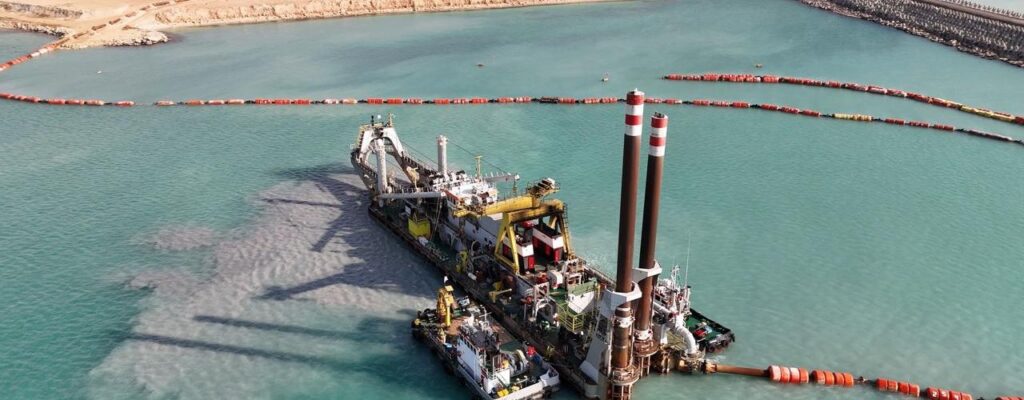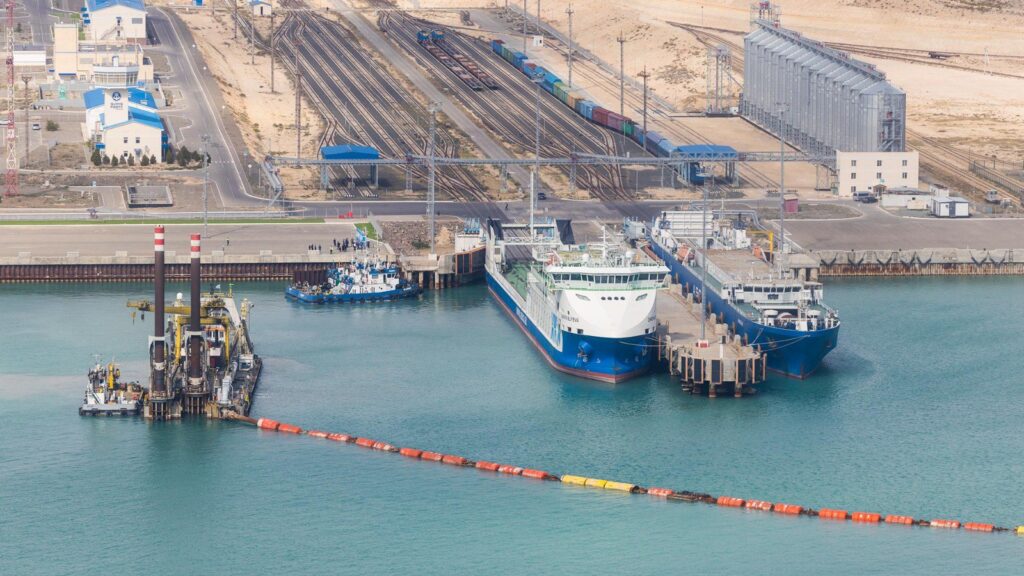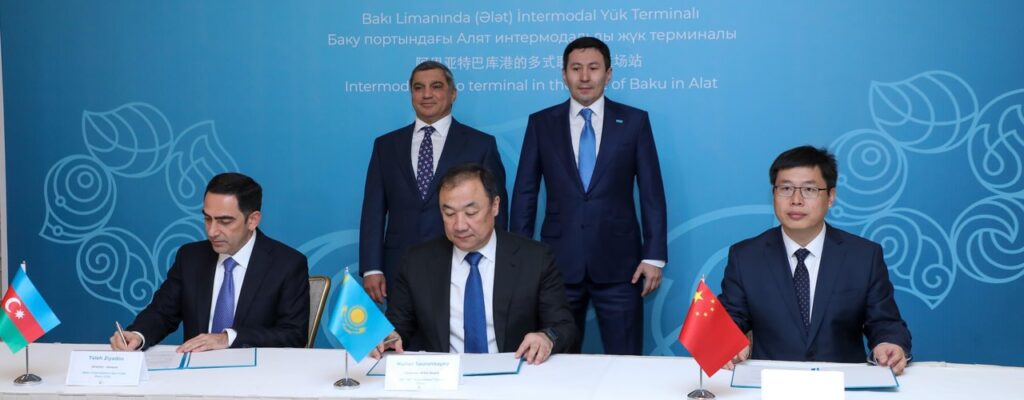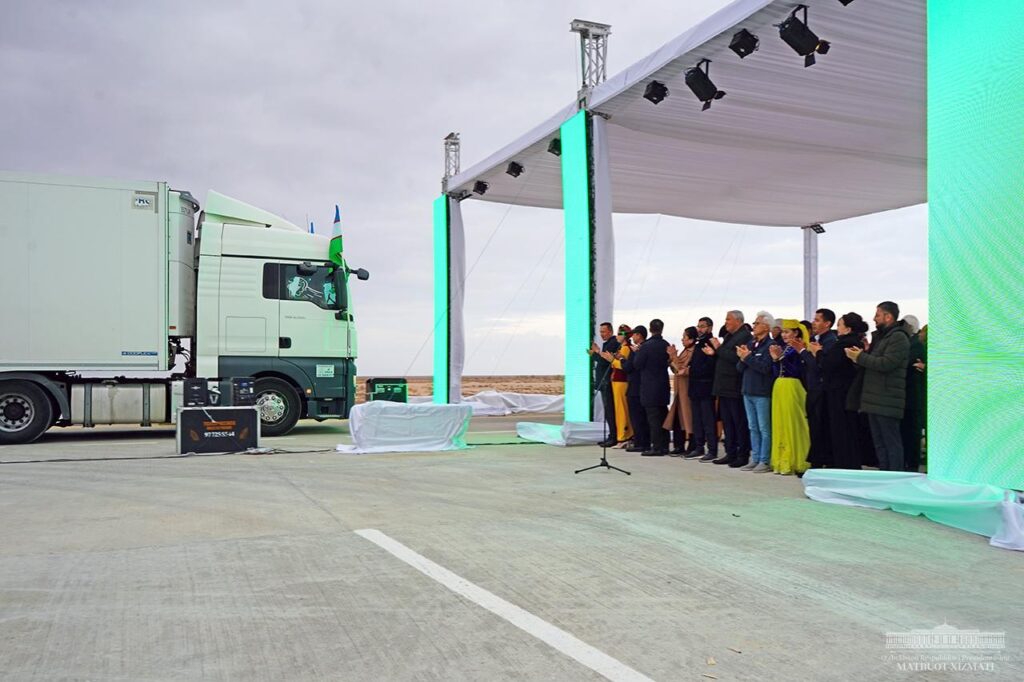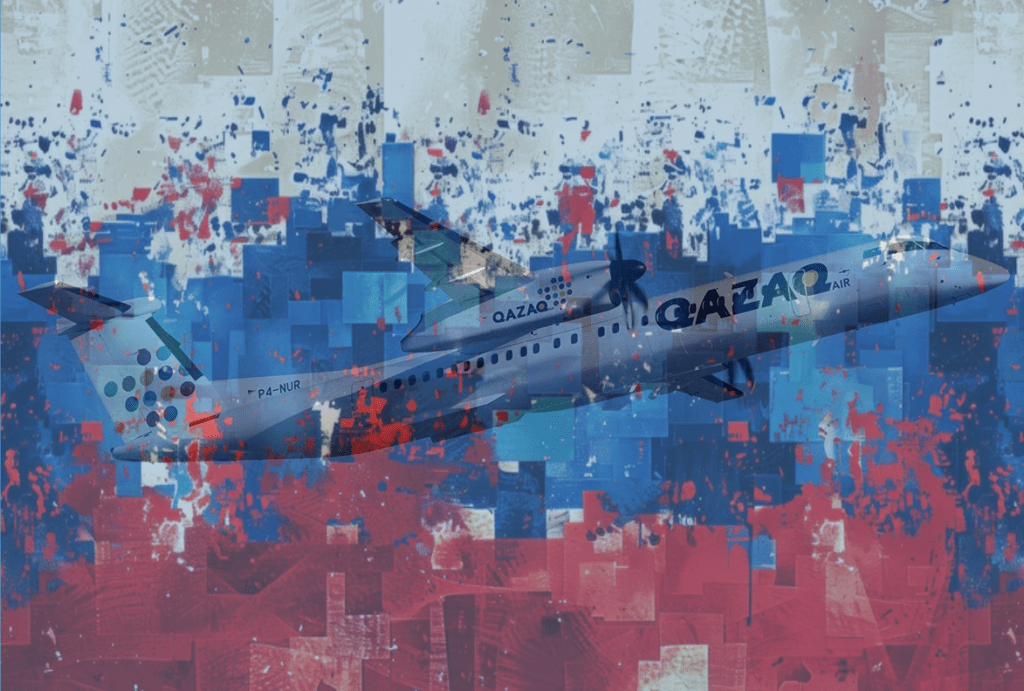By Robert M. Cutler
A new World Bank report on Central Asian connectivity published in April 2024 highlights the importance of the Middle Corridor, a trade route spanning Central Asia, the Caspian Sea, and the Caucasus, connecting China and East Asia with Georgia, Turkey, and Europe. This corridor is seen as a critical alternative to Russian-controlled routes, especially in light of recent geopolitical tensions. The World Bank identifies ten steps to address bottlenecks in the Middle Corridor, aiming to increase trade volumes by tripling them by 2030. This would significantly reduce travel times and increase trade volumes to 11 million tons, with proper investment and efficiency measures in place.
Uzbekistan and the Middle Corridor
The report emphasizes the need for a “holistic” approach to improving transport connectivity in Central Asia. By this, it means a comprehensive and integrated strategy that combines improvements in infrastructure and logistics improvements with a reduction in border delays and tariffs, along with the harmonization of standards across countries.
This includes improving both physical and digital infrastructure, enhancing governance and efficiency and addressing productivity issues amongst the state-owned enterprises that dominate the transport sectors in the region. The World Bank notes that Uzbekistan would profit from better rail connections with Kazakhstan; yet it does not identify any potentials for such projects.
That is likely because a report by the Bank identified the Trans-Caspian International Trade Route (TITR) through southern Kazakhstan as the preferred program for international support. Uzbekistan’s participation in the Middle Corridor is still in a developmental stage. Tashkent has an active interest and a strategic geographic location, but concrete actions and project details are still emerging. There have been no public announcements about specific infrastructure projects or investments that Uzbekistan is undertaking within the Middle Corridor framework. It can be foreseen, however, that railway modernization should be high on the list of programs.
There is, however, a new railway project – the Darbaza–Maktaaral line – currently underway in Kazakhstan that could be extended to improve connectivity with Uzbekistan. It is projected for completion in 2025. A second phase including an extension to Kazakhstan’s Syrdarya station could then facilitate a further branch line from Syrdarya to Zhetysai, on the border with Uzbekistan. This project would reduce congestion at the existing Saryagash border crossing between the two countries and thus increase the capacity for transporting goods between the two countries by as much as 10 million tons per year.
The Middle Corridor and improvements to digital connectivity
At present, the region has only limited connectivity. The Central Asian countries have heavily invested in infrastructure since the turn of the century, but the region still lags behind middle-income countries in both investment and maintenance. Most areas continue to suffer from insufficient infrastructure and expensive services. These in turn hinder the potential for internal and external trade.
The World Bank’s report also provides a comprehensive analysis of the challenges and opportunities for enhancing connectivity in Central Asia. For this purpose, it focuses on both physical and digital infrastructure, underscoring the significance of digital connectivity. The World Bank aims to help enhance digital governance in the region in order to overcome low internet penetration rates and slow download speeds.
The hope is that improving these indicators should foster the private retail telecom sector, facilitating internet access and the provision of services through the renovated networks. The report therefore includes initiatives to set up Earth stations hosting integrated internet exchange points and data centers in the region. Finally, the report highlights the importance of co-operation amongst countries and stakeholders, and the need to create appropriate forums for this, in order to improve the region’s trade and economic prospects.
In this connection, the Asian Development Bank (ADB) — treating Central Asia together with the South Caucasus — recently published its projection that the region’s economy will fall from its 5.3 per cent growth rate in 2023 (thanks to a boost from re-exports and Russian migrant inflows) to 4.3 per cent in 2024, before rebounding to 5.0 per cent in 2025. In implicit co-operation with the World Bank, the ADB has also published a guide to the design, establishment and operation of logistics centers, including the policies that would be necessary to support them.
Conclusion
Revitalization and expanding the Middle Corridor will provide Central Asia an opportunity for Central Asia to enhance its geopolitical leverage and economic resilience. Although Uzbekistan is not at the center of international attention to the Middle Corridor, Tashkent looks to capitalize on its strategic location to continue fostering substantial economic growth.
Collaborative efforts encouraged by the World Bank and the Asian Development Bank promise to transform Central Asia into a more dynamic, interconnected economic landscape. Although Uzbekistan participates widely in discussions for such intensified co-operation, platforms that “drill down” to focus especially on Uzbekistan still seem to be mostly lacking.
Robert M. Cutler has written and consulted on Central Asian affairs for over 30 years at all levels. He was a founding member of the Central Eurasian Studies Society’s executive board and founding editor of its Perspectives publication. He has written for Asia Times, Foreign Policy Magazine, The National Interest, Euractiv, Radio Free Europe, National Post (Toronto), FSU Oil & Gas Monitor, and many other outlets. He directs the NATO Association of Canada’s Energy Security Program, where he is also senior fellow, and is a practitioner member at the University of Waterloo’s Institute for Complexity and Innovation. Educated at MIT, the Graduate Institute of International Studies (Geneva), and the University of Michigan, he was for many years a senior researcher at Carleton University’s Institute of European, Russian, and Eurasian Studies, and is past chairman of the Montreal Press Club’s Board of Directors.



